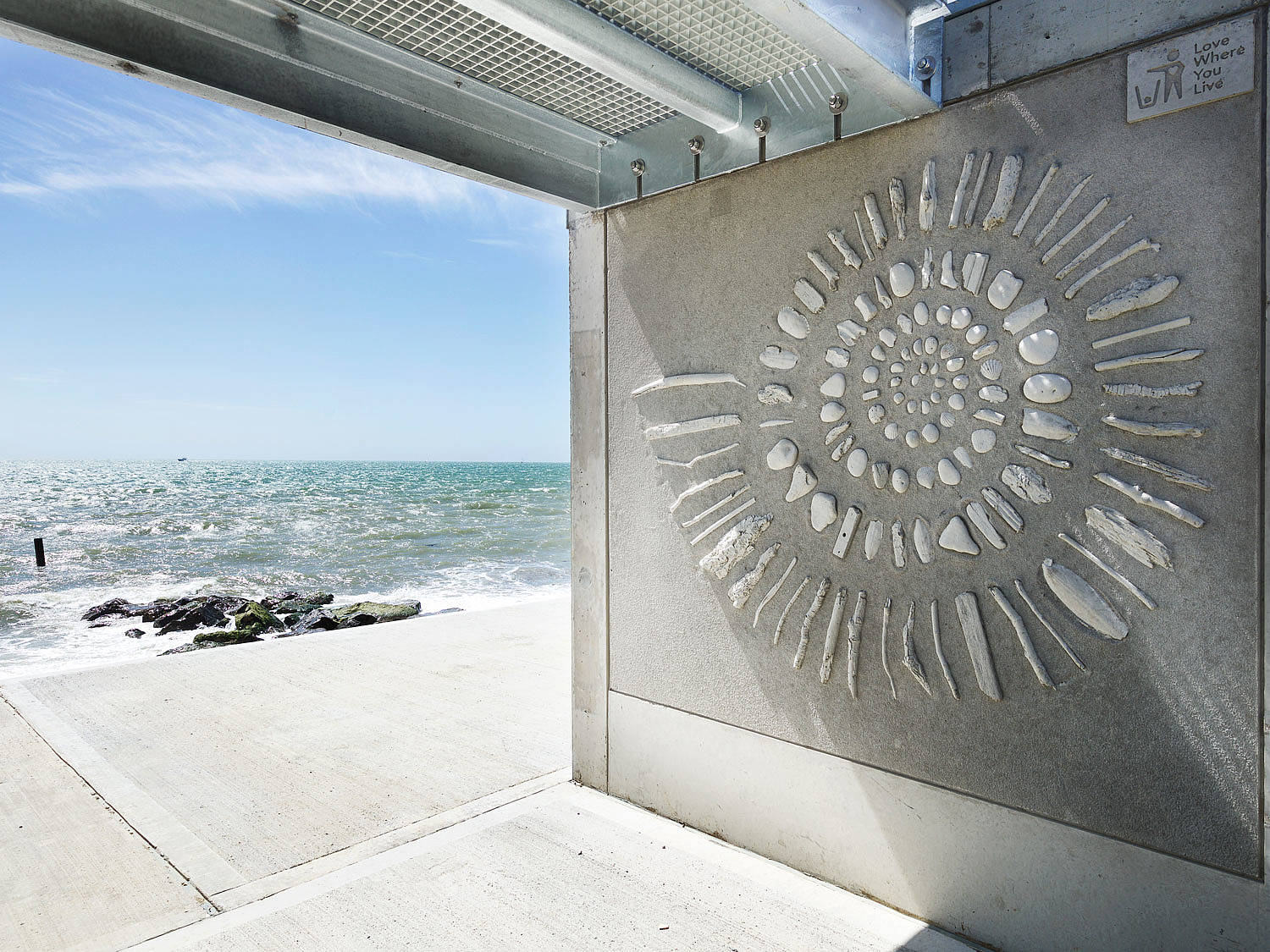Beach Huts, Milford on Sea, England
The colorful sea wall and beach huts in the British town Milford on Sea stand up to the English Channel. The architects designed a multi-functional structure with visual highlights.
160 kilometers southwest of London and less than a 40-minute drive from Southampton is the British coastal village of Milford on Sea. On clear days, residents and visitors to the pretty village can see the Isle of Wight. But in bad weather, strong waves lash the coast – as they did on Valentine’s Day 2014, when a violent storm caused serious damage to the coastal strip of Milford on Sea and the surrounding towns. Of the 119 beach huts used to store beach equipment and toys, around 70 were destroyed during the storm and many more were damaged.
One year after the storm, the community decided to rebuild the beach huts and the promenade behind them. Snug Architects from nearby Southampton won the tender for the project. “From the outset we sought to deliver more than just replacement beach huts”, say the architects. Instead of building a sea wall, beach huts and promenade separately, the firm argued for the unification of the three construction projects into a single project. They won over the residents with their plan to use the beach huts as part of the sea wall and to create a promenade on top of them. “To achieve these enhancements to the programme, we worked closely with the public, holding a one-day exhibition that was attended by over 500 local people”, explain the architects. The participants could look at different designs and vote for their favorite. Using this approach, Snug secured local support and had enough tailwind to convince the local government to increase the bid and budget for the project.
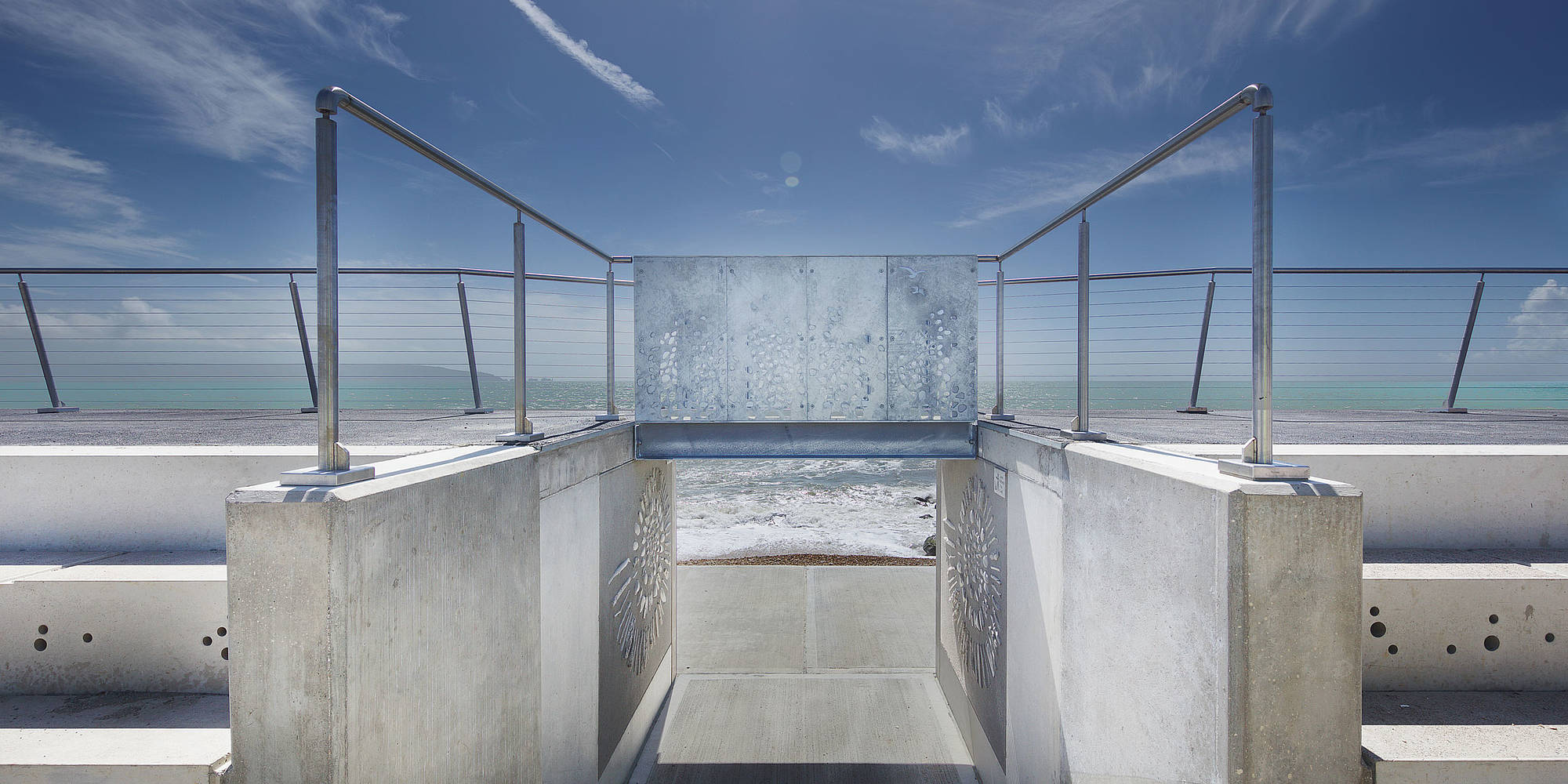
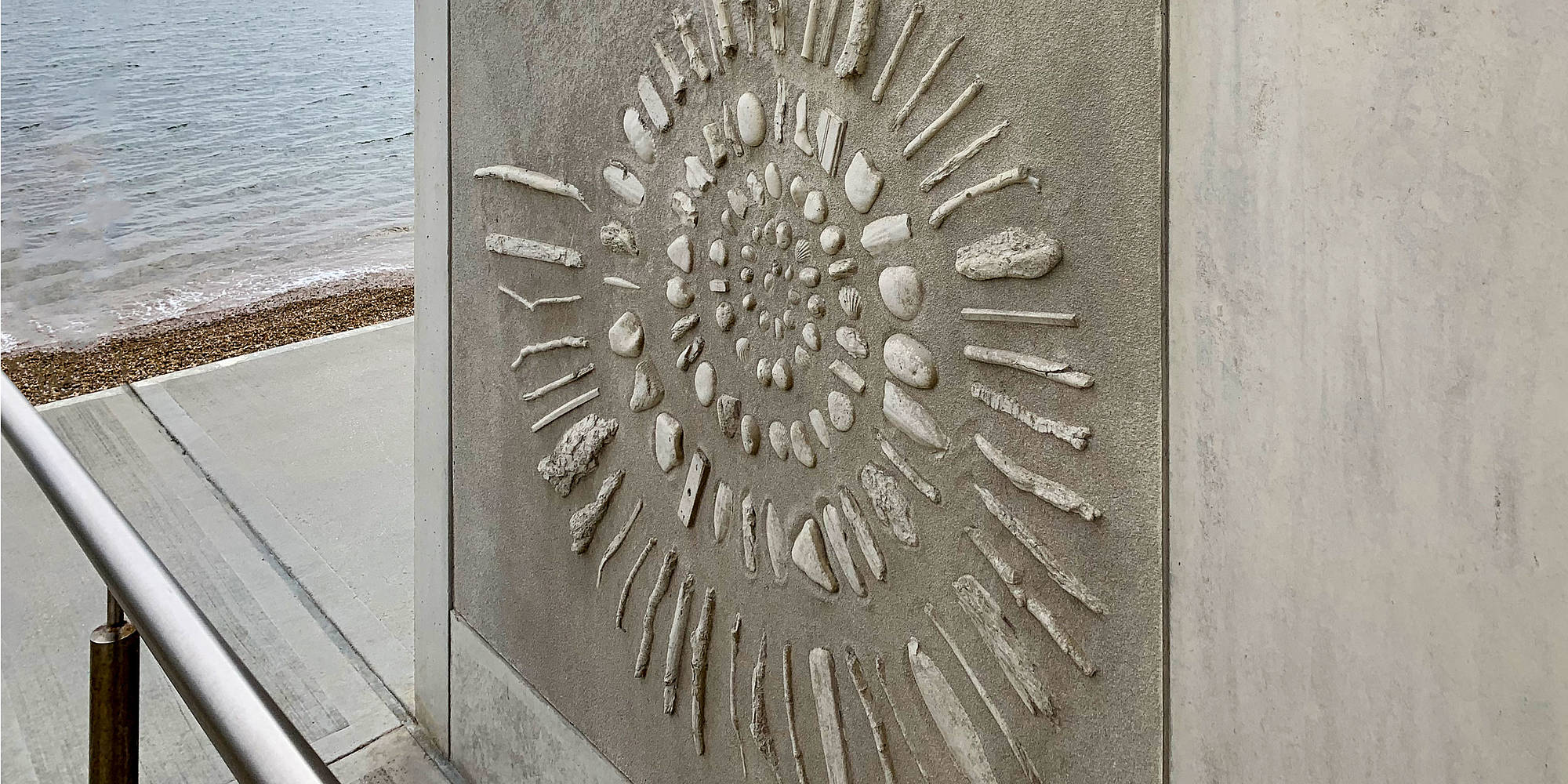
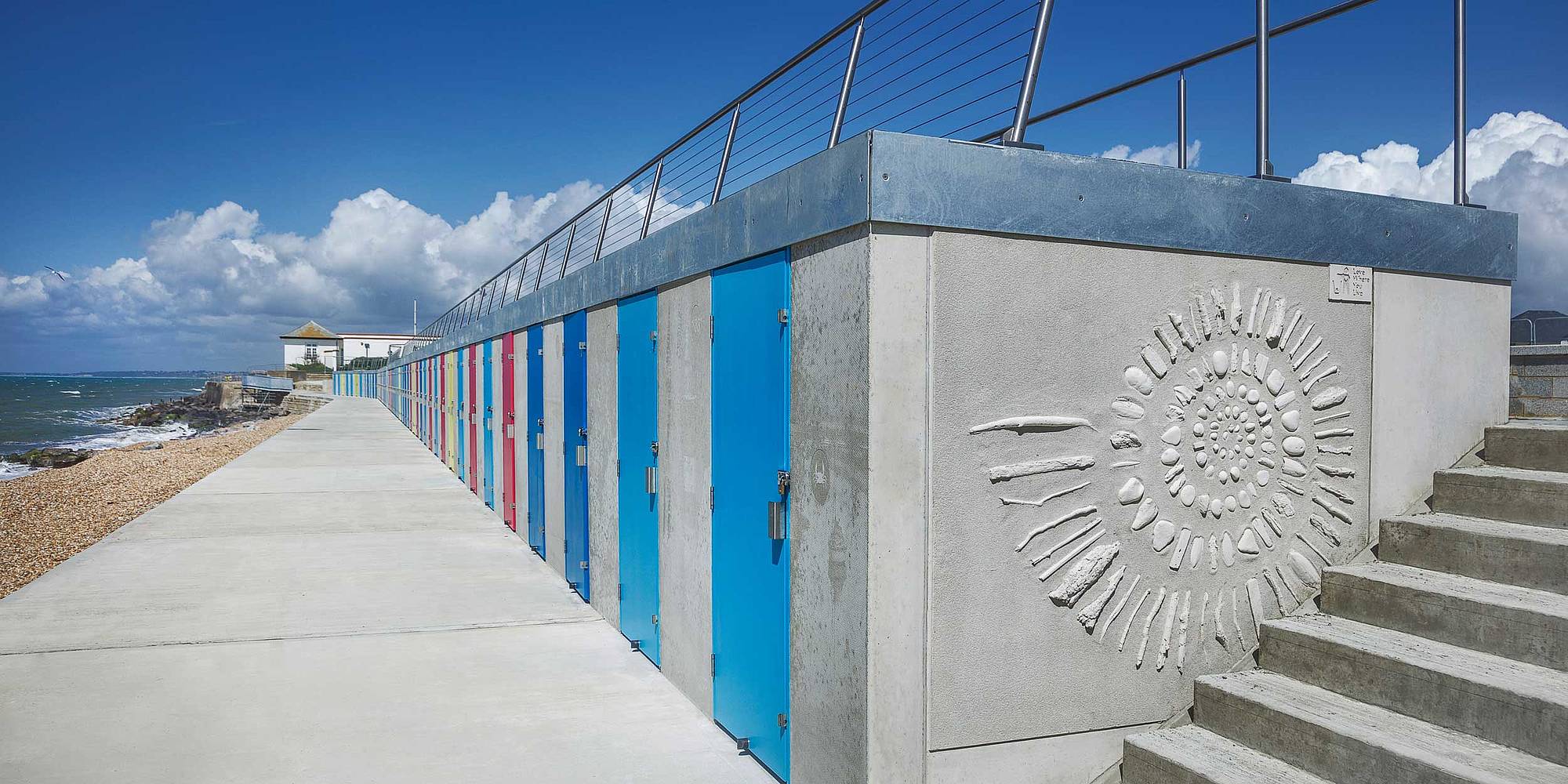
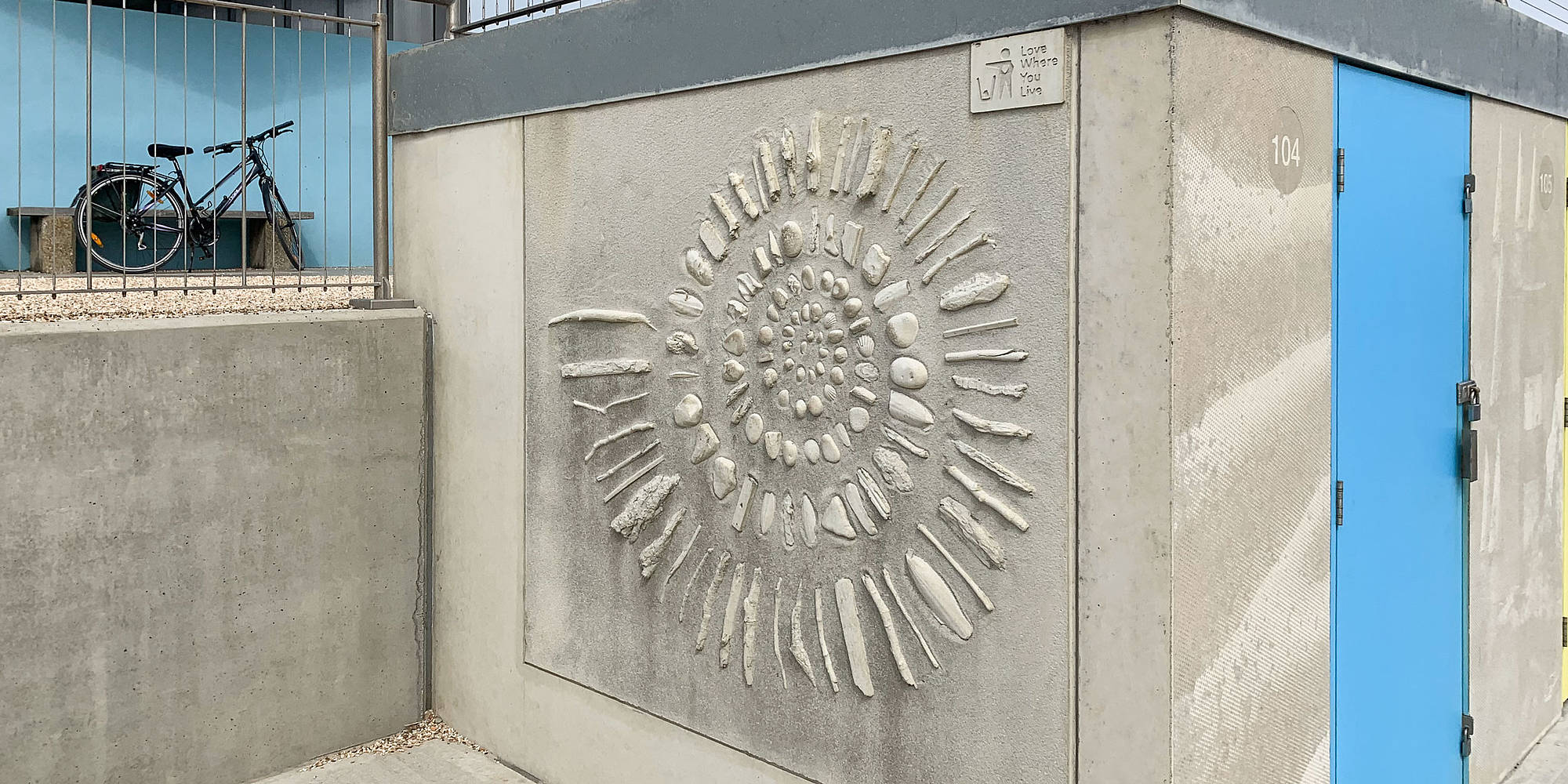
Snug CEO Paul Bulkeley and his colleagues teamed up with Ramboll engineers to create a structure that protects against the forces of nature while being open to the public. The sea wall can resist gale forces that occur only once in 200 years. The beach huts are cube-shaped. Their roofs serve as a promenade from which walkers can enjoy an elevated, unobstructed view of the water. “It has been through the marrying of concrete’s inherent properties with new technologies and creativity that the material’s potential has been realized”, say the architects.
Their concept unites concrete, color and art and proves that functional buildings can also be an optical enrichment. Colorful doors and graphically designed concrete elements with beach scenes visually loosen up the structure. The precast concrete parts were manufactured by British specialist Moore Concrete. A C-element forms the basic structure of the beach huts, whose front sides were adorned with decorative precast concrete elements. The fronts are completed by brightly colored doors, whose color the owners were free to choose. “Individual numbers were also incorporated into these panels during the manufacture process creating a bespoke decorative panel for each hut”, say experts from Moore Concrete.
For the staircases, which are passages from the street to the beach and the promenades, the architects opted for another artistic reference to the maritime environment. “This has involved the collection of driftwood and debris from the historic beach huts and other flotsam jetsam found on the beach which was then arranged to form a ammonite spiral”, say the architects. The parts for the three-dimensionally modeled fossil were sent to Germany, where they served as a positive model for an individual elastic matrix at the RECKLI factory in Herne. The finished structural matrix was subsequently returned to the UK for the precast concrete work. By using the formliner when pouring the concrete, Moore Concrete shaped the custom design into the concrete surface.
The finished pieces on the side walls of the staircases are an eye-catcher. The project cost a total of £ 2.36 million and was completed in the 2017 summer season. Snug Architects also won the Architecture Master Prize 2018 for the design. The project was honored by the Concrete Society in the Highly Commended category. The jury for the Concrete Award praised not only the high quality of the concrete, but also the sustainability of the multi-functional concept and the resource-efficient implementation through cooperation with local companies.
